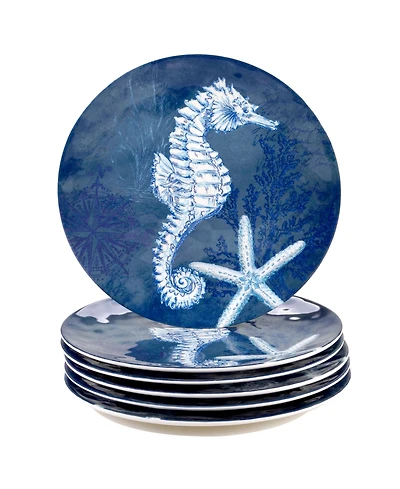Home
Philosophy and Theology in the 'Studia' of the Religious Orders and at Papal and Royal Courts: Acts of the XVth Annual Colloquium of the Societe Internationale pour l'Etude de la Philosophie Medievale, University of Notre Dame, 8-10 October 2008
Barnes and Noble
Loading Inventory...
Philosophy and Theology in the 'Studia' of the Religious Orders and at Papal and Royal Courts: Acts of the XVth Annual Colloquium of the Societe Internationale pour l'Etude de la Philosophie Medievale, University of Notre Dame, 8-10 October 2008 in Franklin, TN
Current price: $107.00

Barnes and Noble
Philosophy and Theology in the 'Studia' of the Religious Orders and at Papal and Royal Courts: Acts of the XVth Annual Colloquium of the Societe Internationale pour l'Etude de la Philosophie Medievale, University of Notre Dame, 8-10 October 2008 in Franklin, TN
Current price: $107.00
Loading Inventory...
Size: OS
Most scholars know that the great universities were the institutional setting of Scholastic philosophical and theological activity in the later Middle Ages. Fewer realize, however, that perhaps far more Scholastic learning in the liberal arts and theology took place in the
studia,
or study-houses of the religious orders, which out-numbered the universities and were more widely distributed across Europe. Indeed, most members of the mendicant orders received most or all of their learning in the liberal arts and theology in the
studia
of their order, and the most famous members of the orders (e.g., Albert the Great, Thomas Aquinas and John Duns Scotus) spent more time teaching in the
than they did serving as Regent Masters in the university proper. As a consequence, the greater part of later medieval Scholastic literature was produced in the institutional context of the
of the religious orders. Moreover, there were other significant institutional
for Scholastic learning and discourse in the later Middle Ages besides the universities and the study-houses, namely the Papal Court-notably the Sacred Palace at Avignon-and several royal courts, for example, the courts of Robert the Wise in Naples and of the Emperor Lewis IV in Munich. It is not surprising, therefore, that many of the greatest Scholastic masters at different times taught in, or were associated with, all of these venues. This volume, which originated at the XVth annual Colloquium of the Societe Internationale pour l'Etude de la Philosophie Medievale held at the University of Notre Dame (USA) in October 2008, contains essays concerning the study and teaching of philosophy and theology in the studia of the Dominicans, Franciscans, Augustinian Hermits, Carmelites, Benedictines and Cistercians, as well as the intellectual activity at the Papal Court in Rome and Avignon and at various royal courts (London, Naples, Munich).
studia,
or study-houses of the religious orders, which out-numbered the universities and were more widely distributed across Europe. Indeed, most members of the mendicant orders received most or all of their learning in the liberal arts and theology in the
studia
of their order, and the most famous members of the orders (e.g., Albert the Great, Thomas Aquinas and John Duns Scotus) spent more time teaching in the
than they did serving as Regent Masters in the university proper. As a consequence, the greater part of later medieval Scholastic literature was produced in the institutional context of the
of the religious orders. Moreover, there were other significant institutional
for Scholastic learning and discourse in the later Middle Ages besides the universities and the study-houses, namely the Papal Court-notably the Sacred Palace at Avignon-and several royal courts, for example, the courts of Robert the Wise in Naples and of the Emperor Lewis IV in Munich. It is not surprising, therefore, that many of the greatest Scholastic masters at different times taught in, or were associated with, all of these venues. This volume, which originated at the XVth annual Colloquium of the Societe Internationale pour l'Etude de la Philosophie Medievale held at the University of Notre Dame (USA) in October 2008, contains essays concerning the study and teaching of philosophy and theology in the studia of the Dominicans, Franciscans, Augustinian Hermits, Carmelites, Benedictines and Cistercians, as well as the intellectual activity at the Papal Court in Rome and Avignon and at various royal courts (London, Naples, Munich).
Most scholars know that the great universities were the institutional setting of Scholastic philosophical and theological activity in the later Middle Ages. Fewer realize, however, that perhaps far more Scholastic learning in the liberal arts and theology took place in the
studia,
or study-houses of the religious orders, which out-numbered the universities and were more widely distributed across Europe. Indeed, most members of the mendicant orders received most or all of their learning in the liberal arts and theology in the
studia
of their order, and the most famous members of the orders (e.g., Albert the Great, Thomas Aquinas and John Duns Scotus) spent more time teaching in the
than they did serving as Regent Masters in the university proper. As a consequence, the greater part of later medieval Scholastic literature was produced in the institutional context of the
of the religious orders. Moreover, there were other significant institutional
for Scholastic learning and discourse in the later Middle Ages besides the universities and the study-houses, namely the Papal Court-notably the Sacred Palace at Avignon-and several royal courts, for example, the courts of Robert the Wise in Naples and of the Emperor Lewis IV in Munich. It is not surprising, therefore, that many of the greatest Scholastic masters at different times taught in, or were associated with, all of these venues. This volume, which originated at the XVth annual Colloquium of the Societe Internationale pour l'Etude de la Philosophie Medievale held at the University of Notre Dame (USA) in October 2008, contains essays concerning the study and teaching of philosophy and theology in the studia of the Dominicans, Franciscans, Augustinian Hermits, Carmelites, Benedictines and Cistercians, as well as the intellectual activity at the Papal Court in Rome and Avignon and at various royal courts (London, Naples, Munich).
studia,
or study-houses of the religious orders, which out-numbered the universities and were more widely distributed across Europe. Indeed, most members of the mendicant orders received most or all of their learning in the liberal arts and theology in the
studia
of their order, and the most famous members of the orders (e.g., Albert the Great, Thomas Aquinas and John Duns Scotus) spent more time teaching in the
than they did serving as Regent Masters in the university proper. As a consequence, the greater part of later medieval Scholastic literature was produced in the institutional context of the
of the religious orders. Moreover, there were other significant institutional
for Scholastic learning and discourse in the later Middle Ages besides the universities and the study-houses, namely the Papal Court-notably the Sacred Palace at Avignon-and several royal courts, for example, the courts of Robert the Wise in Naples and of the Emperor Lewis IV in Munich. It is not surprising, therefore, that many of the greatest Scholastic masters at different times taught in, or were associated with, all of these venues. This volume, which originated at the XVth annual Colloquium of the Societe Internationale pour l'Etude de la Philosophie Medievale held at the University of Notre Dame (USA) in October 2008, contains essays concerning the study and teaching of philosophy and theology in the studia of the Dominicans, Franciscans, Augustinian Hermits, Carmelites, Benedictines and Cistercians, as well as the intellectual activity at the Papal Court in Rome and Avignon and at various royal courts (London, Naples, Munich).

















